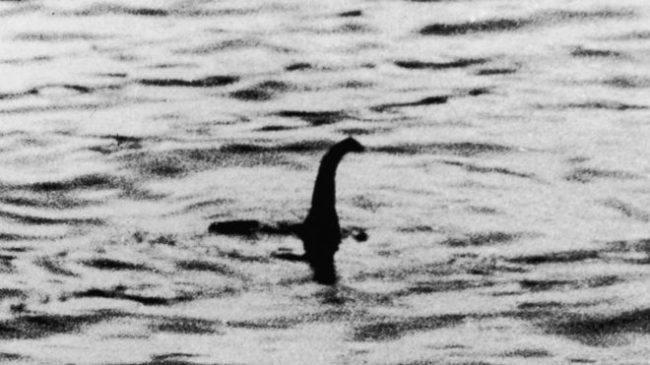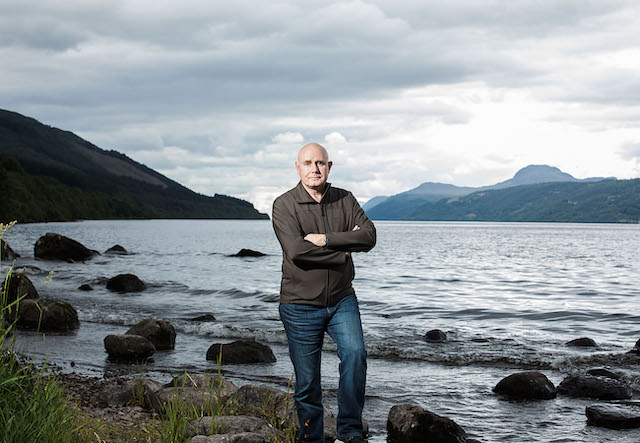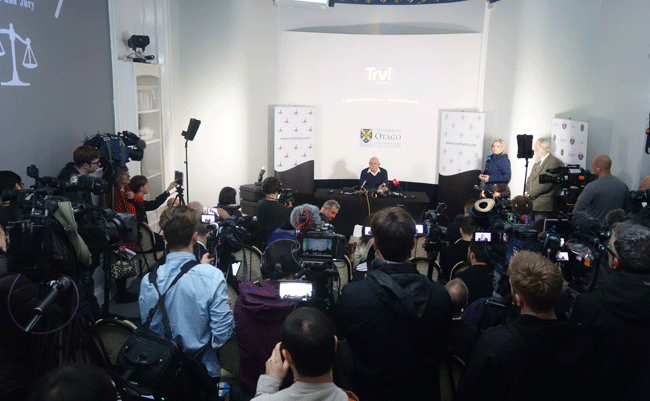
You might have seen a few media stories about the latest Loch Ness monster hunt resulting in a claim that it just might have been a giant eel. It was global – the story ran in the Guardian, the BBC and USA Today. Well yes, welcome to the monster factor; any mention of Loch Ness and monsters is like catnip for the media.
Let’s take a swim in the Loch and see what is really going on here?
Background Q&A on the Loch Ness Monster hunt

Was it really a Monster Hunt by some crank after a bit of attention?
Nope, not at all. I covered these folks back in May of last year. Professor Neil Gemmell of the University of Otago, New Zealand was, at that time gathering samples (up to about 250 water samples). Once he got them back to New Zealand he could then conduct a comprehensive eDNA (Environmental DNA) test.
He made it clear at that time, and also in the latest update, that he does not believe there is a monster, but would be delighted to discover that he was wrong. He was not on a monster hunt.
What is an Environmental DNA test and what did they hope to find?
Life leaves bits of itself behind – poo, skin, etc…. If you take samples of water or dirt then you will be able to isolate and decode this environmental DNA (eDNA). That can then be matched that against a DNA database to see what you have got trace of in that environment. This is becoming an increasingly powerful scientific tool for two reasons …
- The cost of sequencing DNA continues to rapidly drop.
- The DNA Databases are rapidly growing
The value of this approach is that you can in effect take a complete snapshot of an entire ecosystem. The value this brings is that you gain extremely valuable insights that are not practically possible via any other means. To illustrate what else it has been used for here is a quote from National Geographic …
eDNA is helping scientists make major discoveries. In 2011, biologists found the DNA of Asian carp in the canals around Chicago, suggesting that the invasive fish was poised to move into the Great Lakes. In 2016, biologists sampled seawater off the coast of Qatar to understand the genetics of a massive “swarm” of whale sharks. In 2017, researchers announced that they had isolated Neanderthal DNA from soils in Spanish, Russian, and Belgian caves.

Why come all the way from New Zealand to Loch Ness?
When Professor Gemmell was interviewed roughly about two years ago (May 2017) he was asked this very question. He explained it as follows …
Some of my colleagues have said, oh, this is just a bit silly and you’re diverting attention from important questions – why don’t you tell them about the really cool stuff, not this nonsense? And I said, well, you know, I’ll tell them about whatever people are interested in. And I will try to take the conversation in a direction where I can add a bit of knowledge in and around what we do, attached to the idea of something that people actually give a damn about.
… If we found anything that looks a bit different, I think that would be world breaking news, right? Even if we found there were DNA traces of something that hadn’t been described in science before, I can see people getting very excited about that. Whether or not it’s a monster – it might be a new species of bacteria – I don’t know. But anything new that we can link to that loch will, I think, be interesting.
In other words, latch on to something that hooks people and then use it to communicate the power of science.
There is also perhaps another factor in play, namely funding. Mention that you want to eDNA sample some anonymous lake and watch as eyes rapidly glaze over. Mention that a university is off on a monster hunt to Loch Ness and you will probably find various TV companies falling over each other to both film you and also fund you. (It worked, they appear to have cut a deal with the Travel Channel)
Yep, we are right back to media catnip, and the university played them beautifully.
Why all the recent hype this month?
The data is in. They have the results of their comprehensive eDNA test for Loch Ness
Latest Update – Giant eel?
Within their latest press release (Dated 5th Sept 2019), the University explains what has been revealed via their eDNA analysis …
“There is a very significant amount of eel DNA. Eels are very plentiful in Loch Ness, with eel DNA found at pretty much every location sampled – there are a lot of them. So – are they giant eels? Well, our data doesn’t reveal their size, but the sheer quantity of the material says that we can’t discount the possibility that there may be giant eels in Loch Ness. Therefore we can’t discount the possibility that what people see and believe is the Loch Ness Monster might be a giant eel.”
Professor Gemmell adds that “further investigation is needed to confirm or refute the theory, so based on our data, giant eels remain a plausible idea.”
Eels … well yes. Giant eels, and once again we can see the media are being played like a fiddle.
They even have a poster to play on this …

What did they really Find?
This is the bit that most of the media stories brushed over. It is of course what this was really all about…
“What I’m most satisfied with is that we came here to study environmental DNA, and our analysis has captured everything we thought is in the loch. We now have an excellent database which if compared to any future testing could enable us to identify trends and changes in the Loch environment. That is essentially the benefit of eDNA – it is an extremely powerful and robust tool to document the living things (both large and microscopic) present in a given place. It’s going to be extremely useful in the future as the technology becomes quicker and more accessible, more data is created.”
Professor Gemmell says one of the more intriguing findings was the strong input of DNA from land-based species in the Loch.
“We found substantial levels of DNA from humans and a variety of species directly associated with us such as dogs, sheep and cattle. However we also detected wild species local to the area such as deer, badgers, foxes, rabbits, voles and multiple bird species. These findings indicate eDNA surveys of major waterways may be useful for rapidly surveying biological diversity at a regional level.”
You can find the actual data via here, and even explore it (and yes they are still playing the monster hunt card with the Heading of “Can you find Nessie?) ..
They have little images of Nessie plastered all over that.
OK it is monster hype, but it is also the actual data being visualised.
Was the Monster Hype Deliberate?

Very much so, here is a page on the university’s website by their communications adviser. There he explains …
Two weeks out I sent an invite to media that had covered the study in 2018 to attend a press conference in a fortnight at the small town of Drumnadrochit on the shore of the loch. I added a quote from Neil about the four main theories and the data supporting one of those and discounting the others, but didn’t go into detail of dinosaurs and eels, etc. The rest of the invite was basically a where-and-when of the press conference.
With the quote included I was expecting the invite to spark some coverage, but was surprised how far it went. Our monitoring found the invite lead to coverage reaching a potential audience of 380 million people.
A lot of reporters commented to me about how much of a tease the invite was, and while I didn’t want to overblow the situation, there needed to be a good reason for media to show interest.
Yes indeed. In June of 2018 they travelled to Loch Ness, gathered their samples and then went back home to New Zealand where they conducted their research.
For the big reveal, for no scientific reason at all, they travelled all the way back to Scotland simply to hold a press conference. It truly did work …
from my perspective, the media seemed happy with how the day had run. This comes down partly to me keeping things moving and providing as much material as possible, but most importantly it came down to Neil delivering.
I have to tip my hat to Neil, it is not easy to do multiple interviews back to back (he did a lot – I’d say around 20) and for each one was engaging, energetic and informative. The interview requests continue to come in now, and Neil has been great in working through those and spreading the key message of how eDNA provides valuable knowledge about biodiversity of a place.
This story has received the most coverage of any out of the University of Otago. As Neil has mentioned, the monster hunt was the bait, and the science is the hook. His aim has always been to promote eDNA and it’s potential for monitoring biodiversity. I’m proud to have played my part in spreading that message.
I’d quietly been hoping we would reach a potential audience of 1 billion people. Our latest tally up shows the story has reached a potential audience of 4.8 billion. If even a small percentage of those people now know about the University of Otago and are now interested in science and eDNA and perhaps want to come here, then that is a great result in my book.
With a tip of my hat to it all, what can I say except, “well played guys”.
Further Reading
- Wikipedia page that acts as a great primer for environmental DNA (eDNA) testing.
- My article from May 2018 that reports on this story when the team was gathering their water samples.
- The Super Natural History website (spun up by the University to plug their results and also promote the Travel Channel documentary on it all) – you can get to the actual data via this site.
- The press release by the University announcing the latest update (dated 5th September 2019)
- Page on University website by their communications officer discussing how they very deliberately hyped the Loch Ness Monster to attract attention to the actual science they were doing. (dated 17th September 2019)
- The results, their actual data …
- The Gemmell lab page is here
